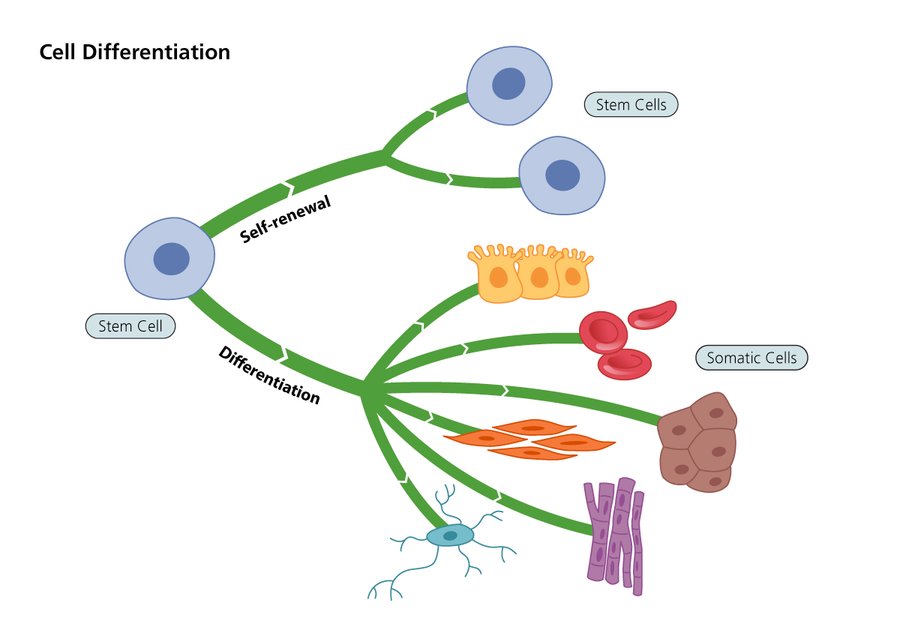
Stem cells – a new tool to investigate rare diseases
Stem cells have the capacity to self-renew to produce additional stem cells by process of mitosis. They can be classified as multipotent (ability to give rise to multiple cells within a lineage), pluripotent (ability to give rise to cell types in adult) and totipotent (ability to give rise to all the adult and embryonic cell lineages). Multipotent stem cells must have the differentiation capacity to generate two different lineages from the same embryonic germ layer. Whereas pluripotent stem cells can make multiple lineages from all the three embryonic germ layers (endoderm, mesoderm, and ectoderm) (1).
Stem cells and their fundamental characteristics
A stem cell can divide and make other cell types(self-renewal) and can make other cell types, performing other biological functions (differentiation). For example, hematopoietic stem cells found in bone marrow, generate cells that give rise to immune system and red blood cells, they represent the capability to give rise to various cell types but only for blood lineage and thus can be classified under multipotent cell type. Stem cells have been used for multiple purposes such as drug screening, transplantation therapies and studying rare cell types. For instance, to study human neurons one can use human pluripotent stem cells (2).
Mouse and human embryonic stem cells
Mouse embryonic stem cells have been known for years before human embryonic stem cells were derived. Mouse and human ES (embryonic stem cells) share various features including pluripotency, and the capacity to self-renew, however they differ from each other in the way they are cultured. Mouse ES cells has different growth and differentiation requirements and different morphology than that of human ES cells (3).
REFERENCES:
- Tabansky I, Stern JNH. Basics of Stem Cell Biology as Applied to the Brain. 2016 Jul 27. In: Pfaff D, Christen Y, editors. Stem Cells in Neuroendocrinology [Internet]. Cham (CH): Springer; 2016.
- Tabar V, Studer L (2014) Pluripotent stem cells in regenerative medicine: challenges and recent progress. Nat Rev Genet 15:82–92
- Thomson JA (1998) Embryonic stem cell lines derived from human blastocysts. Science 282:1145–1147



